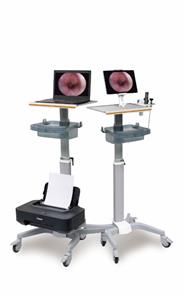Esophagoscopy
Background
Esophagoscopy is a procedure in which a flexible endoscope is inserted through the mouth or, more rarely, through the nares and into the esophagus.The endoscope uses a charge-coupled device to display magnified images on a video screen. The procedure allows visualization of the esophageal mucosa from the upper esophageal sphincter all the way to the esophagogastric junction (EGJ).
This procedure is one of several procedures that fall under the category of upper endoscopy, including gastroscopy, esophagogastroduodenoscopy (EGD), and enteroscopy. Esophagoscopy alone is uncommon: It is generally performed as part of a more complete upper endoscopic procedure in which the esophagus, stomach, and portions of the small intestine are explored endoscopically.
In the United States, esophagoscopy is usually performed with moderate sedation, which is achieved by administering a narcotic and benzodiazepine in combination. In Europe and Asia, however, the procedure is commonly performed without sedation. Topical anesthesia is sometimes implemented to improve patient tolerance and comfort. Very rarely, general anesthesia is used in patients who are difficult to sedate or are at higher risk of airway compromise. There is some evidence for the effectiveness of unsedated esophagoscopy in monitoring pediatric esophageal disease. [1, 2]
The focus of this article is on transoral esophagoscopy. For information regarding transnasal esophagoscopy, see Transnasal Esophaoscopy.




